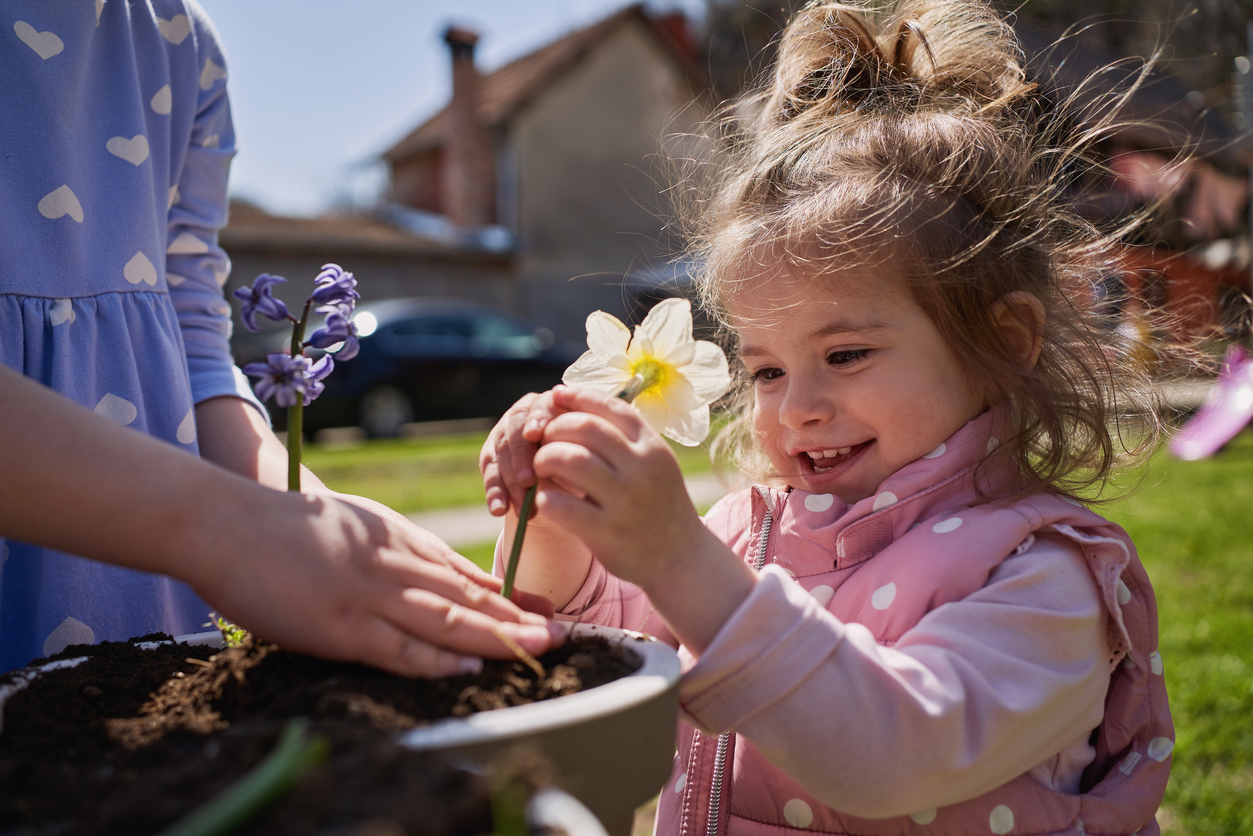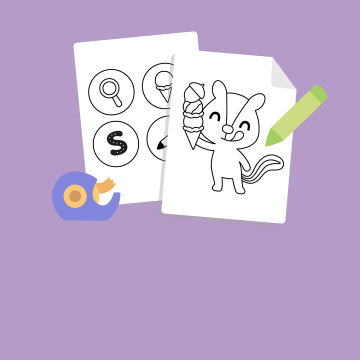- DIY Fairy Tales: How to create your own magical story
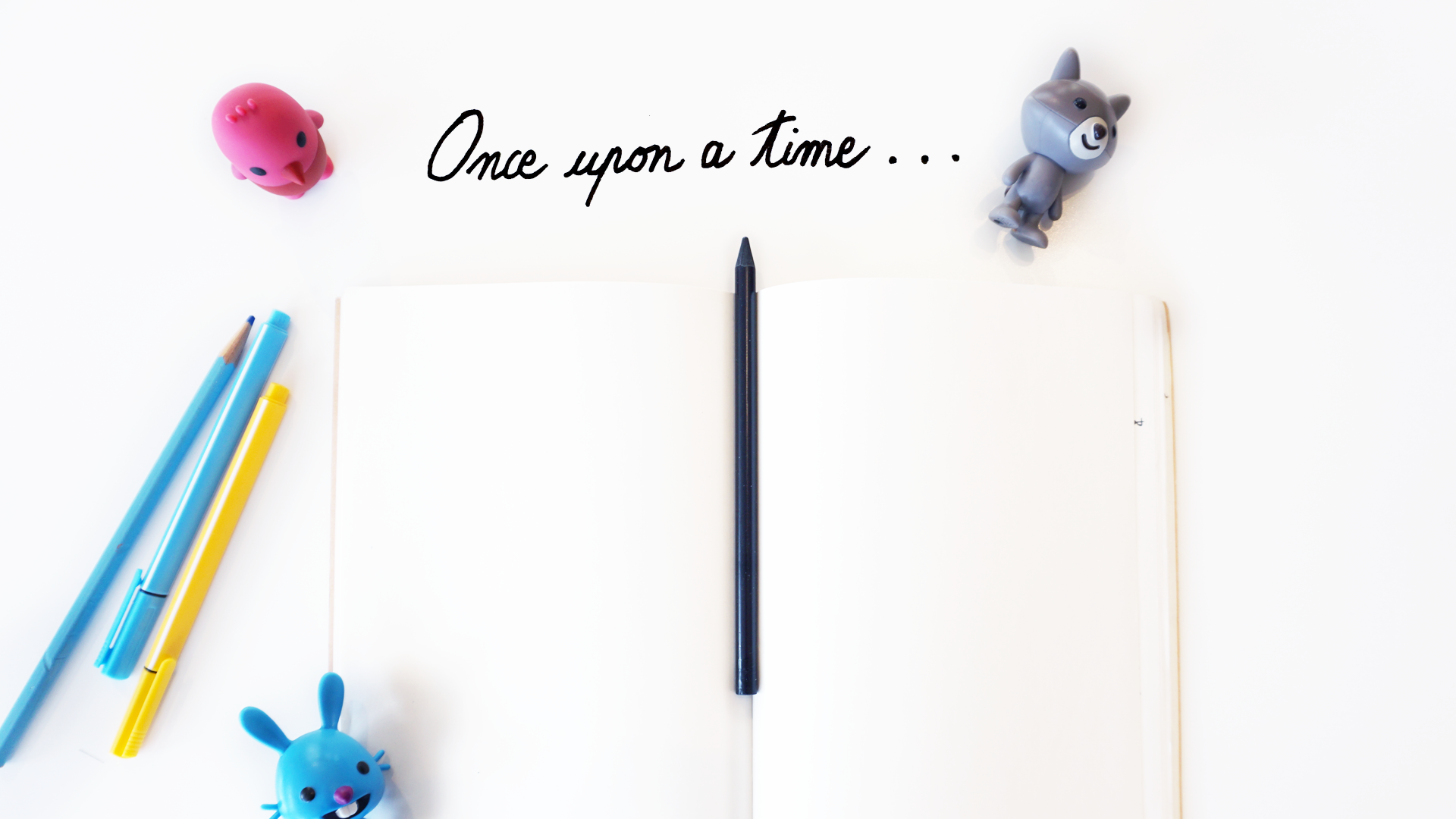
Bedtime. Wednesday night. You’re at the story-reading stage, that final checkmark before you can settle in with a glass of something red and your Netflix queue. You pull out the Princess and the Pea for the nth time, but you know how this one goes. And how it’ll end. Before you can say “Once upon a time,” your eyelids are drooping – looong before your kid’s.
The classics are classics for a reason. But creating your own DIY fairy tale not only gives your child a taste of creative ownership, it brings a unique twist to the bedtime story – who doesn’t love seeing their ideas in print? Below, we take you through a step-by-step guide to concepting, writing and creating your own crafty fairy tale – one of our all-time favourite activities for kids.
Step 1: Scope out the competition
Next time you flip through your child’s favourite fairy tale with them, ask a few critical-thinking questions to get their creativity flowing in advance of their big literary debut. We’ll share a few thought starters below:
-If you were writing this fairy tale, what would you do differently?
-What’s your favourite image in this fairy tale? Helpful hint: You can explain how there are two sorts of images in storytelling: the picture they see on the page, and the picture that appears in their mind when they hear the words!
-Who do you think the hero is? What about the villain? Helpful hint: Sometimes, the answer isn’t as easy as it seems!
-Describe the setting. Is it a place that you’d like to live? Why or why not? Helpful hint: Explain that setting is a location – it could be anything from a preschool, local doctor’s office, a plane to the Bahamas or a mystical land in a far-off galaxy.
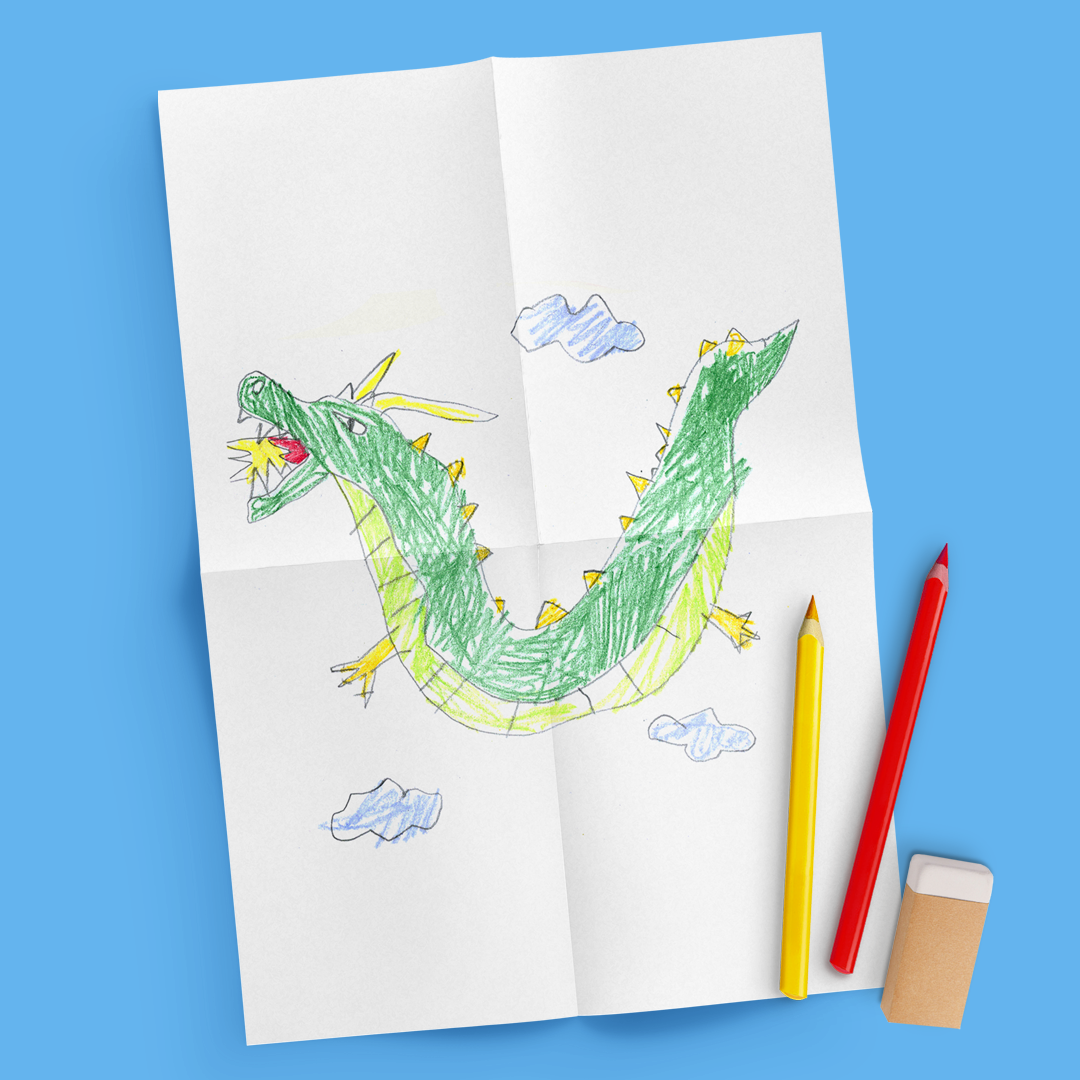
Step 2: Get the creative juices flowing
This one requires a bit of advance preparation. After they head off to bed, write each of the following words on their own blank sheet of paper: “Setting”, “Hero”, “Villain”, “Action” and “Ending”.
The next day, carve out a bit of time to sit with your child, and ask them to draw or dictate a few ideas for each page. Treat this as free association, and let them know that there’s no such thing as mistakes or wrong answers during this phase.
Here are a few prompts for each section if they get stuck:
-Setting: What’s a place you visit often? Would you like to set your fairy tale there? What’s your favourite fairy tale? What’s the setting in that story? Would you like to set your story there too?
-Hero: Who is your favourite superhero? What about your favourite person in real life? What do you like about them? What makes them special to you?
-Villain: Now, imagine who might make your hero veeeery upset. What is their personality like? What might they look like?
-Action: Okay, so we’ve got the hero and the villain together in your setting. Imagine what they might say to each other when they see each other. What would they do? Would they have a party? Or maybe get into an argument? Is one of them magic? Maybe the villain (or the hero) casts a spell!
-Ending: After the action takes place, what happens? Is it a happy ending? Or is it a sad ending? Will there be another fairy tale sequel to continue the story?
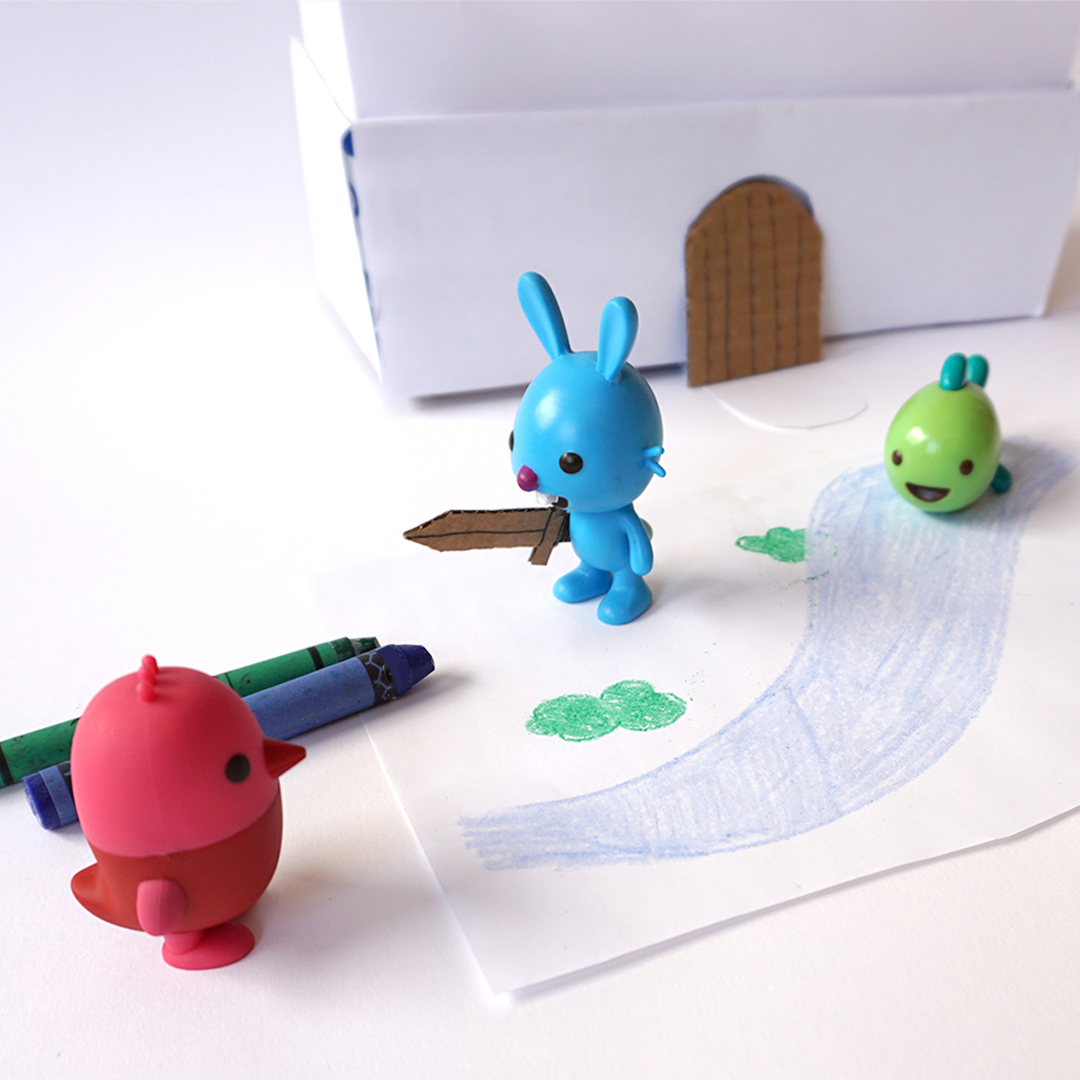
Step 3: Start your story
To prep, look through the free association your child did yesterday. Jot down a few notes about their story if it’s helpful! Next, staple together a few pages in storybook format. Or try this On the right side of each page, write a simple story with your child. Leave the left side blank so your expert in-house illustrator can fill in the blanks. They can use their notes from yesterday as inspiration, or go off the book!
Step 4: Set the scene
Alright parents, pull out the recycling box: this is where things get crafty. (Although unlike some other shoebox, paper towel and toilet paper roll crafts, your kids will have a real interest in how these pan out – they created the story, after all!) A tissue paper roll becomes a turret or underwater tunnel, while a shoebox or tissue paper box easily doubles a castle or a spaceship. Decorate, colour & decoupage to your heart’s content! You can snap pics of the scene to stick in the book, then easily digitize the whole thing as a PDF using a free scanner app. But don’t strike the scene just yet – the most exciting part is coming up next!
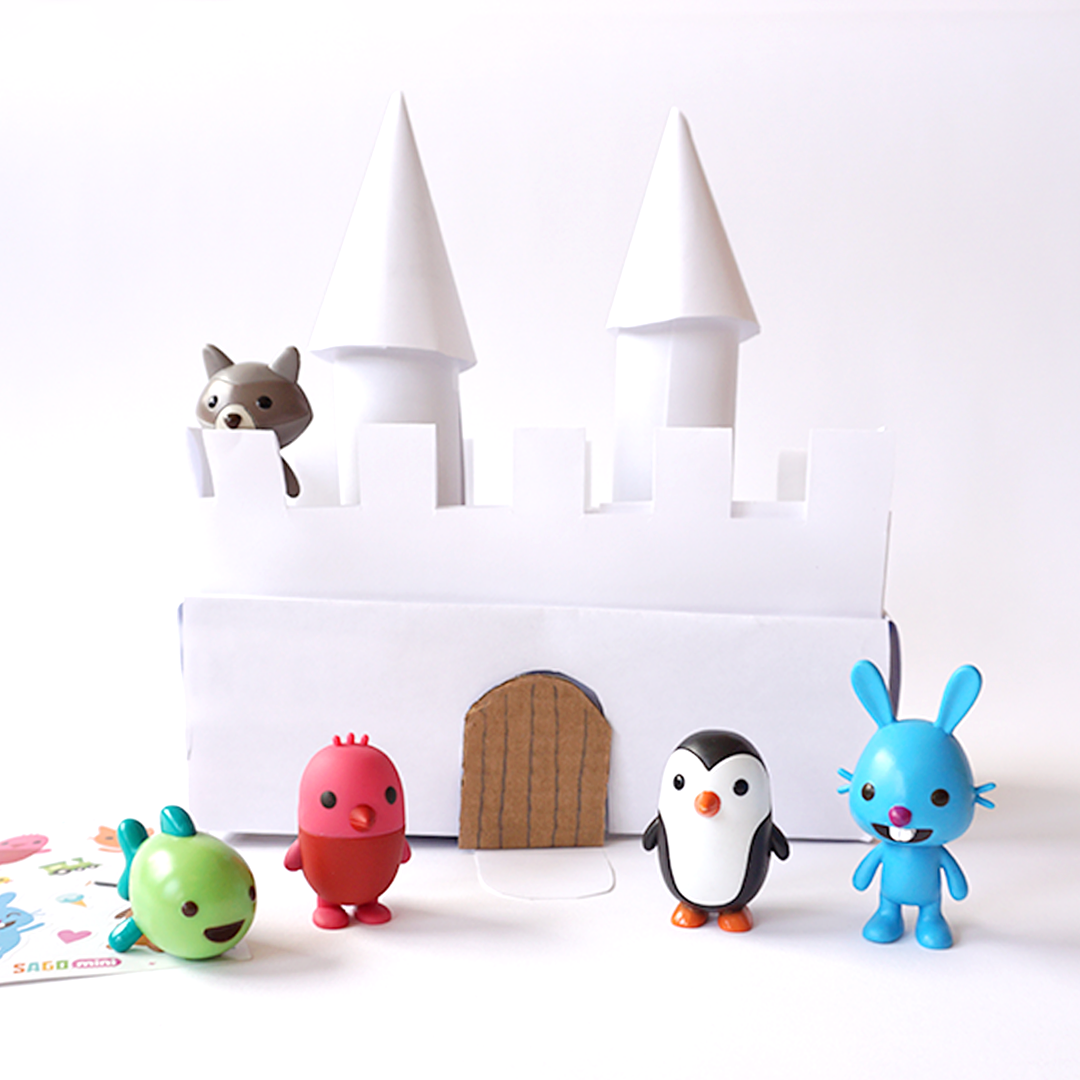
Step 5: Act it out
As great contemporary novels become Oscar-baiting films, so too do fairy tales become great plays. Pop the popcorn, dim the lights and gather the family for the premiere matinee of your DIY fairy tale! You can read from the book (which now doubles as a handy script!) while your kid acts out the plot with figurines. The Sago Mini characters are perfect for this – who doesn’t want to see Jinja go paw to tentacle with a mighty-but-misunderstood Dennis the Octopus?
Wishing you creative inspiration and crafty luck as you get to creating your very own fairy tale!
